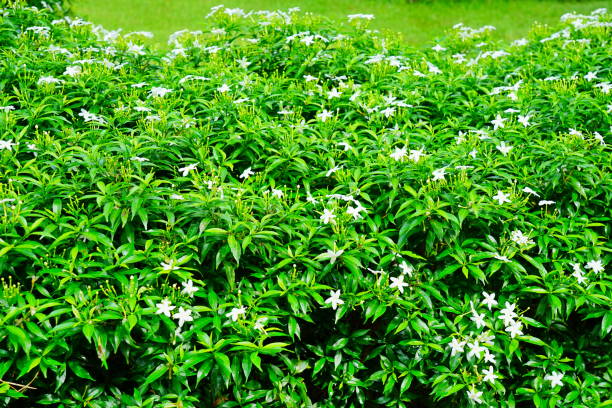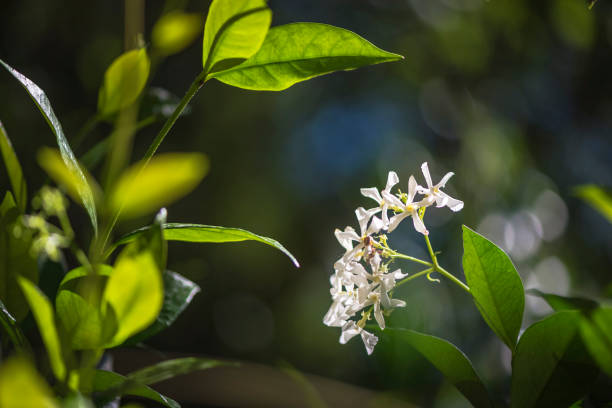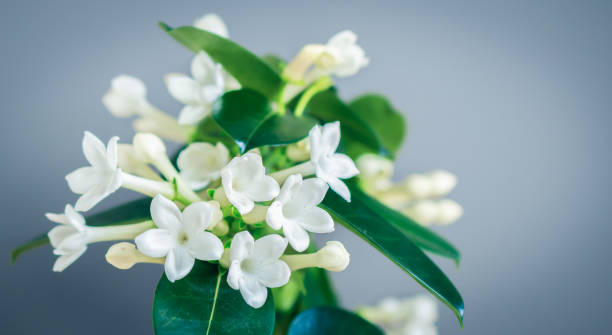How Fast Does Jasmine Grow?
The common jasmine grows at a moderate rate of speed. It grows between 1-2 feet per year. The flower will start to bloom at the beginning of autumn and extend through winter. As the weather gets warmer, jasmine flowers wither down. That is why gardeners usually cut out old blooming stems in your yard during summer.

Table of Contents
Which Jasmine Grows the Fastest?
The star jasmine is also well-known for its extraordinary rate of growth. The growth rate of this high-speed, ever-twining masterpiece is estimated to be between 3-6 feet per year if all of the conditions are met. After a few years, your star jasmine can reach heights of 18 to 20 feet and a width of approximately 20 feet if grown properly. If you intend to let, it climb around a structure, ensure it has plenty of space. The conditions mentioned above include a warm, humid environment with plenty of exposure to direct sunlight.
In most cases, such conditions are present during the summer and spring. However, before the plant can grow at such a rapid rate, it must first establish a rigorously invasive rooting system. It requires a significant amount of energy, nutrients, and time during the first season of growth.

How Long Until Star Jasmine Spreads?
Starting on the Right Foot
If your star jasmine seems to be stuck in neutral the first year it’s in the ground, don’t get frustrated. It’s growing a robust and extensive root system to help it grow in the future. Star jasmine’s roots and top growth are balanced by the second season. Plants should be spaced 5 feet apart to cover a large area of ground. By the third year, you should be covered. In the spring and early summer, star jasmine grows 2 feet tall and 10 feet wide, with glossy green leaves covered in tiny, pinwheel-like blossoms. With some help, the plant can grow to be a 20- to 30-foot vine.
Improving Health
The right environment and proper care are required for star jasmine to grow strong and vigorously. The plant thrives in full sun to partial shade and is hardy in USDA plant hardiness zones 8 through 11. Star jasmine thrives in hotter inland climates, but it prefers to be shielded from the intense afternoon sun. The health of the star jasmine depends on well-drained soil. Drought-tolerant in coastal zones, the plant goes into a tailspin when its roots are suffocated or stressed by overwatering. After watering it thoroughly, allow the soil to dry slightly before watering it again.
Increase Rate of Growth
While controlling moisture prevents nutritional deficiencies and maximizes soil nutrients, star jasmine still needs a boost. Fertilize star jasmine twice, once before and once after flowering. Fertilize the soil with a complete fertilizer, such as 12-12-12 granular, 1.5-2 pounds per 100 square feet. Keep weeds at bay so your star jasmine doesn’t have to compete for nutrients.
Keeping One’s Ground
Cut back spreading stems to encourage branching in young star jasmine. Dense growth and side shoots produce fragrant flowers. Annual pruning keeps star jasmine at the desired height. Prune each year after flowering to avoid sacrificing next year’s blooms. Remove stray upward-growing branches. Wear gloves, long sleeves, and protective eyewear when pruning. When cut, star jasmine exudes a harmless milky white sap. Sterilize your pruners before and after use to avoid disease spread.

How Do You Accelerate Star Jasmine’s Growth?
Soil
Your star jasmine needs the right environment to grow quickly. The soil’s pH, type, and moisture should all be noted. Sand, clay, or loam. Plant on loamy soil for best results. It also thrives in both acidic and alkaline soil. If its pH is between 6.0 (acidic) and 7.5 (alkaline). Aside from soil quality, the star jasmine roots prefer moist soil. If it’s a potted star/confederate jasmine, the soil should be well-drained to avoid overwatering, which can stunt the plant’s growth.
Temperature
The star jasmine is native to tropical areas where it thrives. The average tropical temperature should be well replicated where you plant your star jasmine. Your star jasmine will thrive in temperatures between 60-75°F (16-24°C).
Sunlight
When vine-like star jasmine grows along a wall or other supporting structure, it grows towards the sun. Aside from the star jasmine’s twining direction, sunlight is essential for its general growth and rapid blooming. Make sure your star jasmine gets enough sunlight to proliferate.
Fertilizers
Fertilization is one of the best ways to improve star jasmine growth. Your fertilizer should have more phosphorus than nitrogen and potassium. So use a 7-9-5 fertilizer on your star jasmine (7 percent nitrogen, 9 percent phosphorus, and 5 percent potassium). That level of Nitrogen helps produce healthy green leaves. Phosphorus helps flowers grow faster and bigger. Potassium is required to strengthen the star jasmine roots and increase their resistance to diseases and pests.
Mulch
Mulch the soil around your star jasmine in the winter when the temperatures are cooler and the sunlight is less. It will get all the nutrients it needs during this season.
Jasmine Varieties & Growth Rate
| Varieties | Growth Rate |
| Arabian Jasmine | moderate |
| Common Jasmine | moderate to fast, 1-2 feet per year |
| Italian Jasmine | moderate to fast |
| Pink Jasmine | fast |
| Primrose Jasmine | moderate |
| Star Jasmine | fast, 3-6 ft per year |
| Showy Jasmine | slow to moderate |
| South African Jasmine | slow to moderate |
